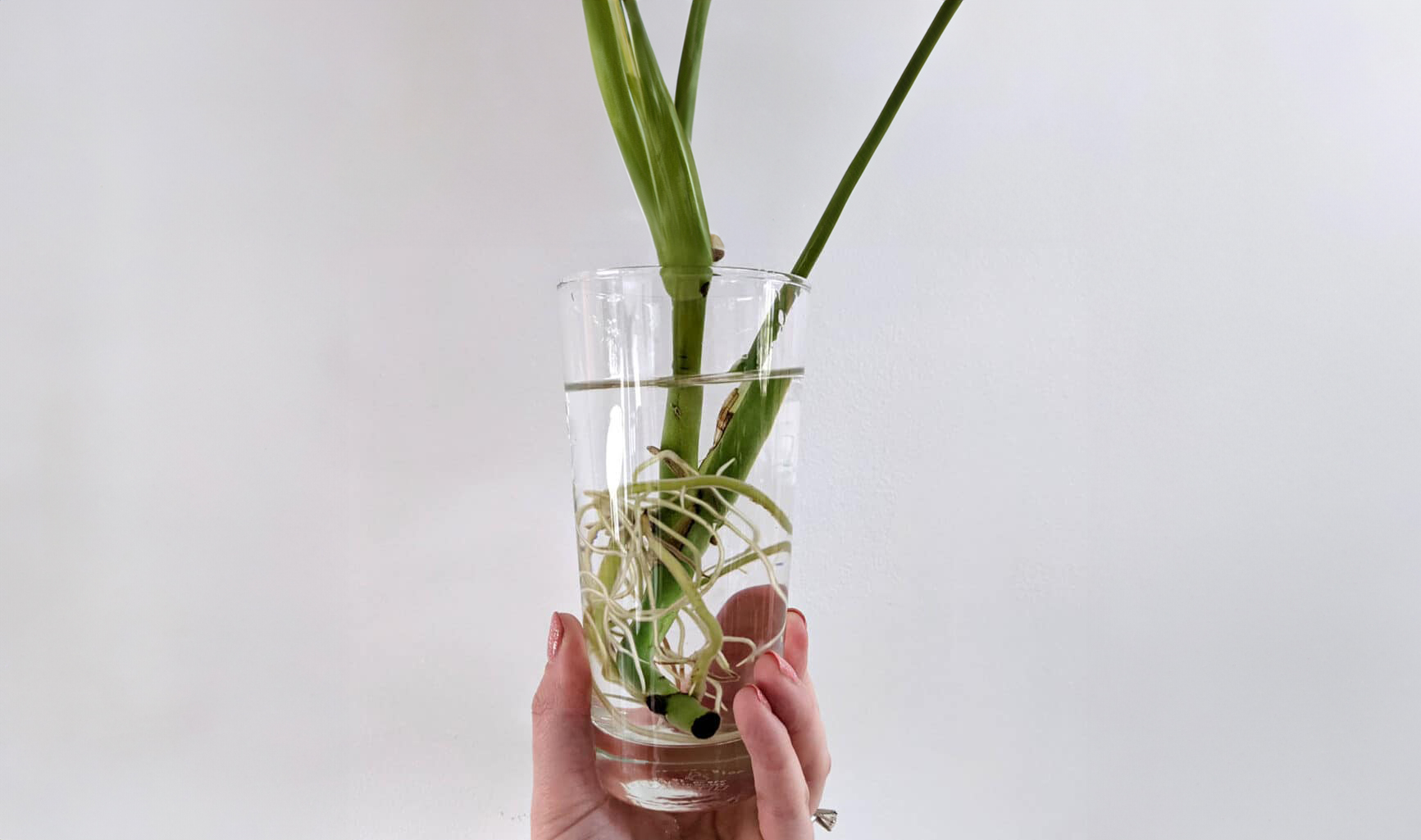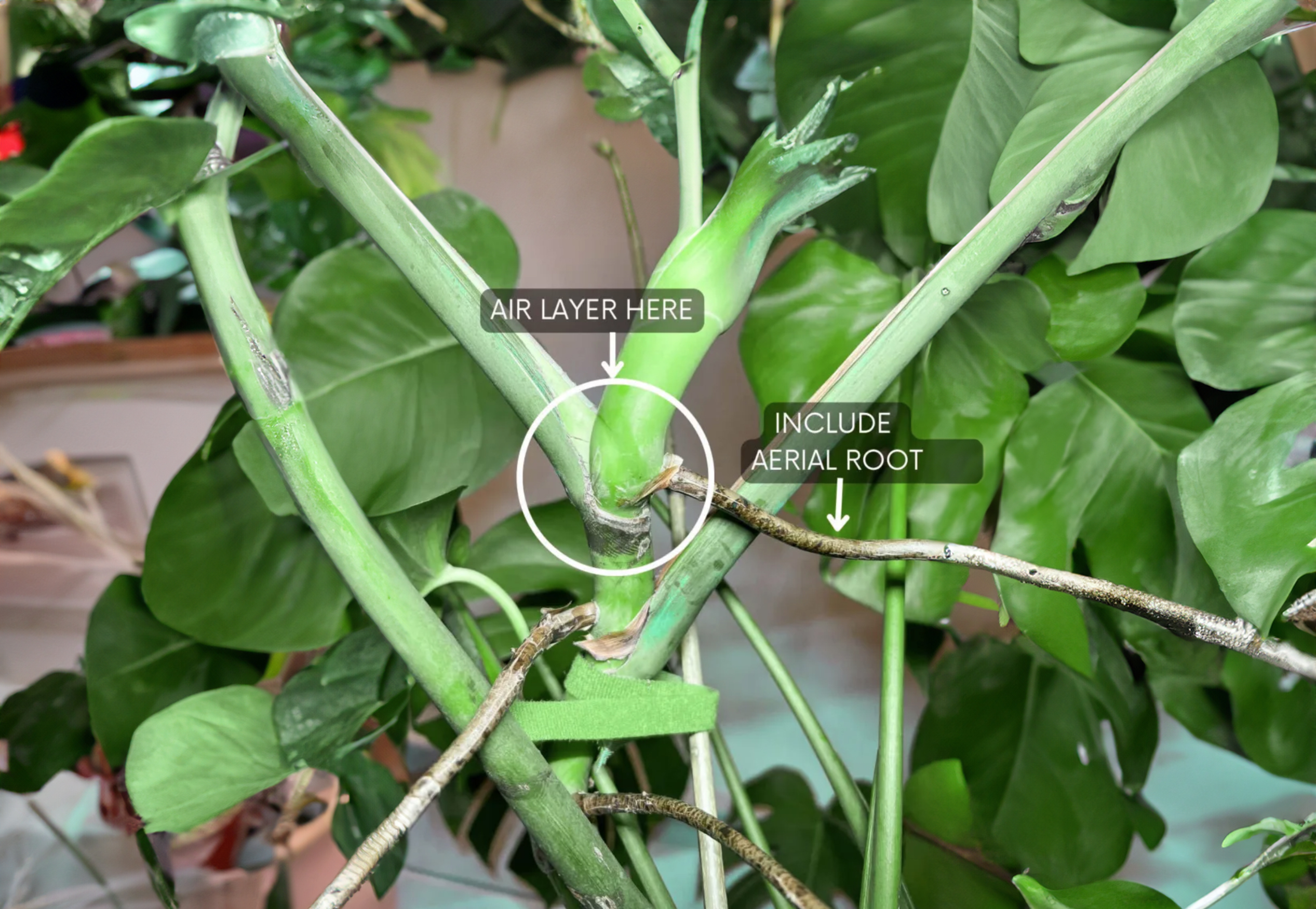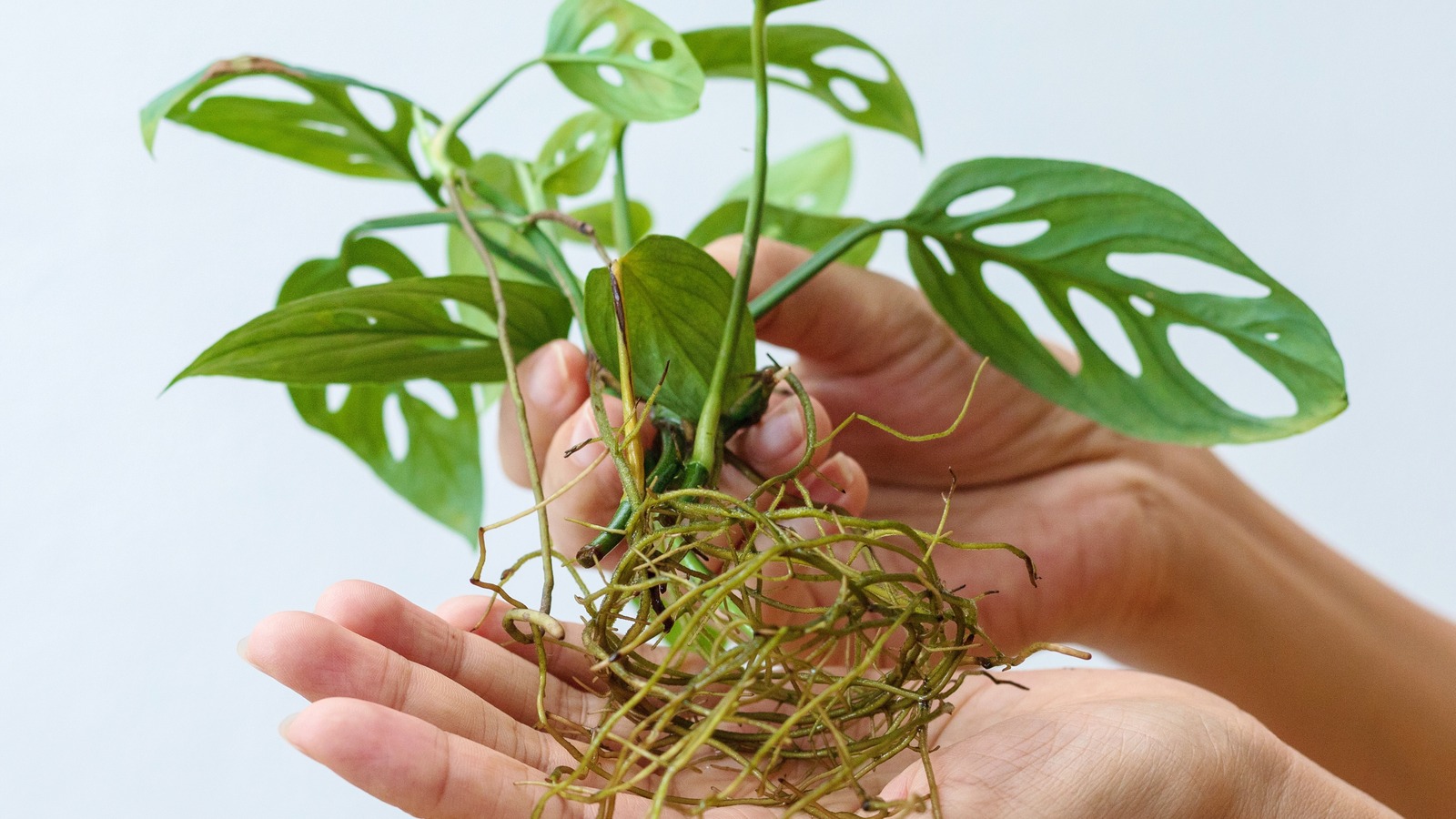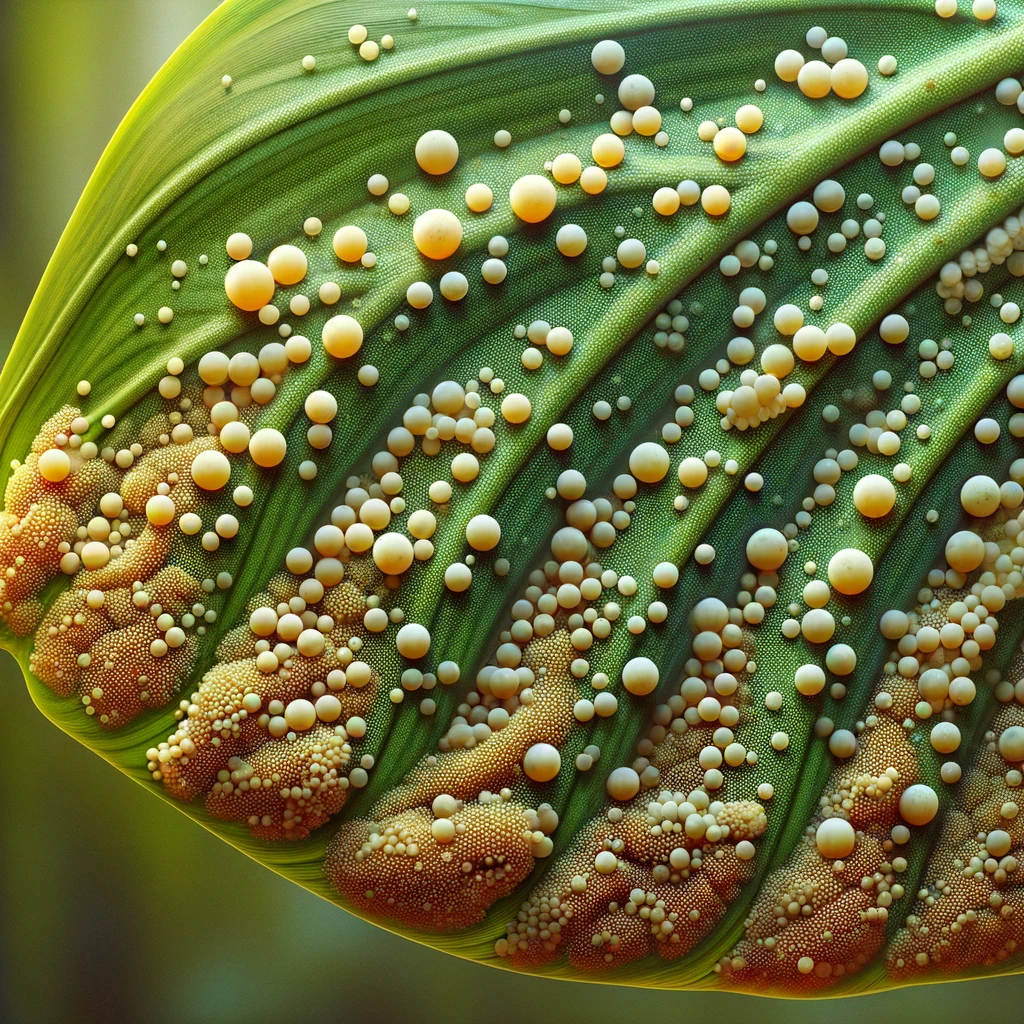5 Steps to Multiply Your Monstera: Propagation Secrets Revealed!
Monstera deliciosa, commonly known as the Swiss cheese plant, is a popular houseplant admired for its unique, perforated leaves. Propagating monsteras is an easy and affordable way to acquire new plants. There are a few different techniques for monstera propagation, each with their own advantages.
Stem cuttings involve taking a cutting from an existing monstera plant and rooting it in water or soil.
Selecting a Stem
When selecting a stem for propagation, choose one that is healthy, mature, and has at least one node. Nodes are the points on the stem where leaves and aerial roots emerge. The stem section should be 3-6 inches long.
What to Cut
Cut right below an aerial root or node using a clean, sharp knife or pruning shears. Be sure to make a clean cut rather than tearing the stem.
Where to Cut
The cutting should be taken right below an aerial root or node. These areas have cells that can develop into new roots. Taking the cutting below a node provides more opportunities for new growth.

Propagating in Water
Propagating monstera cuttings in water is a simple and popular technique.
Transition to Soil
Once the cutting has developed strong, healthy roots about 2-3 inches long, it can be transferred to a pot with well-draining indoor plant soil.
Potting Mix
Use a standard potting mix amended with perlite for drainage. Monsteras like slightly acidic soil with a pH between 5.5-7.
New Growth
Over the next few weeks, new leaves will emerge as the cutting transitions from water to soil. Keep the soil moist but not saturated.
Advantages
Water propagation allows you to observe the rooting process. It's inexpensive and easy to care for new cuttings this way.

"Explore the Exceptional 2023 Monstera Variegata Collection: A Curated Selection of the Rarest and Most Unique Varieties Available."
Air layering, also called air propagation, involves inducing roots to form on a monstera stem while it's still attached to the parent plant.
Wound Stem
Select a healthy stem with aerial roots. Make a shallow 1-1.5 inch cut using a clean knife, being careful not to cut all the way through the stem.
Stimulate Root Growth
Dust the cut area with rooting hormone powder to encourage root production. Cover the wound with sphagnum moss and wrap it tightly with clear plastic wrap.
Separate New Plant
Once sizable roots form, cut the rooted stem from below the plastic wrap & plant the new monstera. Keep it protected as it establishes.
Air layering has a high success rate since the rooted cutting remains nourished by the parent plant while it develops. No transition period or special care is required.

Mature monstera plants can be divided to propagate multiple new plants. This technique splits the plant's rhizomes or root structure.
Where to Divide
Carefully remove the plant from its container. Look for sections along the root system that can be separated into smaller individual plants.
Preparing Divisions
Gently tear connected root sections apart. Use a clean, sterilized knife or garden shears if needed but try not to cut the roots. Create multiple smaller plants.
Repotting Divisions
Plant divisions immediately into pots with drainage holes filled with a standard indoor potting mix. Water sparingly until re-established. Place in bright, indirect light.
Dividing monsteras generates full, mature new plants instantly. The process causes minimal stress since the divisions remain independent plants with intact root systems.

Monsteras also propagate through algae-like spores on the underside of their leaves. These are harmless to the plant itself but can spread quickly to other surfaces.
Appearance
The tiny, round monstera spores first appear as yellowish or white specks or patches underneath leaves. They gradually darken to brown/green as they mature.
Spreading Spores
To use monstera spores for propagation, collect them on a cotton swab and transfer them to the surface of another plant's leaves or prepared sowing mix.
Germination
In the right warm, humid environment, the spores will germinate, forming gametophytes. These eventually produce new sporophyte monstera plants.
While slower and more difficult, propagating monsteras from spores can yield many unique, genetically diverse new plants over time.

Shipping: Door to door shipping, fast and safe with Dragon Courier
Biodiversity: Thailand is known for its rich biodiversity, including a wide variety of aroid species. This diversity allows importers to access a broad range of unique and exotic aroid plants.
Quality and Health of Plants: The suitable climate helps the plants grown here stay healthy and of high quality.
Cost-Effectiveness: Due to favorable growing conditions and efficient production methods, Thai aroid plants can often be more cost-effective compared to those from other countries.
Access to Hybrid Varieties: Thai growers are often involved in the development of new hybrid aroid varieties, offering unique plants that may not be available from other sources.
Monstera species are the most sought after by aroid plant lovers
There are several highly effective methods for propagating new monstera plants. Stem cuttings, air layering, division, and spore collection can successfully generate fresh, full-sized monsteras. Understanding the different techniques allows indoor gardeners to expand their monstera collection affordably and sustainably. With a little practice, anyone can propagate as many magnificent new Swiss cheese plants as they desire through these simple techniques.
See more 5 Amazing Benefits of Monstera Plants in Your Home
https://greenboog.com/monstera-propagation-secrets-revealed/
Stem Cuttings
Stem cuttings involve taking a cutting from an existing monstera plant and rooting it in water or soil.
Selecting a Stem
When selecting a stem for propagation, choose one that is healthy, mature, and has at least one node. Nodes are the points on the stem where leaves and aerial roots emerge. The stem section should be 3-6 inches long.
What to Cut
Cut right below an aerial root or node using a clean, sharp knife or pruning shears. Be sure to make a clean cut rather than tearing the stem.
Where to Cut
The cutting should be taken right below an aerial root or node. These areas have cells that can develop into new roots. Taking the cutting below a node provides more opportunities for new growth.

Propagating in Water
Propagating monstera cuttings in water is a simple and popular technique.
Transition to Soil
Once the cutting has developed strong, healthy roots about 2-3 inches long, it can be transferred to a pot with well-draining indoor plant soil.
Potting Mix
Use a standard potting mix amended with perlite for drainage. Monsteras like slightly acidic soil with a pH between 5.5-7.
New Growth
Over the next few weeks, new leaves will emerge as the cutting transitions from water to soil. Keep the soil moist but not saturated.
Advantages
Water propagation allows you to observe the rooting process. It's inexpensive and easy to care for new cuttings this way.

"Explore the Exceptional 2023 Monstera Variegata Collection: A Curated Selection of the Rarest and Most Unique Varieties Available."
Propagation by Air Layering
Air layering, also called air propagation, involves inducing roots to form on a monstera stem while it's still attached to the parent plant.
Wound Stem
Select a healthy stem with aerial roots. Make a shallow 1-1.5 inch cut using a clean knife, being careful not to cut all the way through the stem.
Stimulate Root Growth
Dust the cut area with rooting hormone powder to encourage root production. Cover the wound with sphagnum moss and wrap it tightly with clear plastic wrap.
Separate New Plant
Once sizable roots form, cut the rooted stem from below the plastic wrap & plant the new monstera. Keep it protected as it establishes.
Air layering has a high success rate since the rooted cutting remains nourished by the parent plant while it develops. No transition period or special care is required.

Propagation by Division
Mature monstera plants can be divided to propagate multiple new plants. This technique splits the plant's rhizomes or root structure.
Where to Divide
Carefully remove the plant from its container. Look for sections along the root system that can be separated into smaller individual plants.
Preparing Divisions
Gently tear connected root sections apart. Use a clean, sterilized knife or garden shears if needed but try not to cut the roots. Create multiple smaller plants.
Repotting Divisions
Plant divisions immediately into pots with drainage holes filled with a standard indoor potting mix. Water sparingly until re-established. Place in bright, indirect light.
Dividing monsteras generates full, mature new plants instantly. The process causes minimal stress since the divisions remain independent plants with intact root systems.

Spore Propagation
Monsteras also propagate through algae-like spores on the underside of their leaves. These are harmless to the plant itself but can spread quickly to other surfaces.
Appearance
The tiny, round monstera spores first appear as yellowish or white specks or patches underneath leaves. They gradually darken to brown/green as they mature.
Spreading Spores
To use monstera spores for propagation, collect them on a cotton swab and transfer them to the surface of another plant's leaves or prepared sowing mix.
Germination
In the right warm, humid environment, the spores will germinate, forming gametophytes. These eventually produce new sporophyte monstera plants.
While slower and more difficult, propagating monsteras from spores can yield many unique, genetically diverse new plants over time.

Where to buy monstera? Benefits from importing plants from Thailand
Shipping: Door to door shipping, fast and safe with Dragon Courier
Biodiversity: Thailand is known for its rich biodiversity, including a wide variety of aroid species. This diversity allows importers to access a broad range of unique and exotic aroid plants.
Quality and Health of Plants: The suitable climate helps the plants grown here stay healthy and of high quality.
Cost-Effectiveness: Due to favorable growing conditions and efficient production methods, Thai aroid plants can often be more cost-effective compared to those from other countries.
Access to Hybrid Varieties: Thai growers are often involved in the development of new hybrid aroid varieties, offering unique plants that may not be available from other sources.
Monstera species are the most sought after by aroid plant lovers
Conclusion
There are several highly effective methods for propagating new monstera plants. Stem cuttings, air layering, division, and spore collection can successfully generate fresh, full-sized monsteras. Understanding the different techniques allows indoor gardeners to expand their monstera collection affordably and sustainably. With a little practice, anyone can propagate as many magnificent new Swiss cheese plants as they desire through these simple techniques.
See more 5 Amazing Benefits of Monstera Plants in Your Home
https://greenboog.com/monstera-propagation-secrets-revealed/
Nhận xét
Đăng nhận xét